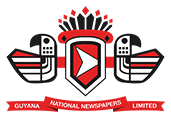REFORMULATION and repositioning of medicines, also referred to as repurposing, has become the norm in the pharmaceutical industry for optimising investment costs of a product lifecycle.
Drug reformulation is the development of different formulations for the same medicine and drug reposition is finding a new therapeutic use(s) for an old tested and established drug.
The rationale behind this business strategy is to exhaust growth opportunities which arise from the evitable threats within this industry such as rapid drug development by competition, attrition from clinical trials, intensified drug safety concerns, restricted patents period, generic competition and regulatory demands.
Apart from reducing the risk to the pharmaceutical manufacturer, especially in the event of a product recall or collateral damage due to an unforeseen adverse event, this cost-effective strategy maximises returns on investment.
Pharma giants which invest in innovation expend approximately US$1.3B to bring a new drug to market, with 10-17 years to reclaim their investment after discounting time for product development and regulatory review from the 20-year patents period, granted from the date of the application.
Notwithstanding the patents, new therapeutic advantages yielding better results is another driving force for an enhanced drug product.
A new formulation or a new indication is visibly presented on newly designed packages and or labels stating “new and improved”. Branding of the new and improved product as a marketing strategy increases sales by repositioning the product and expanding the target audience.
The success story of drug repositioning was witnessed in 1998 with the drug sildenafil, popularly known as Viagra and with a revised marketing strategy for erectile dysfunction. The same drug marketed under the name Revatio for the indication of pulmonary arterial hypertension in adult, is still unheard of today.
Reformulation includes a change in molecular formulary either because of concentration of active ingredient, inactive compounds or drug delivery mechanism. The pharmacokinetic features of the product can be altered to generate an improved pill that is dosage compliant such as modified release formulations (MR), extended release (XL) and slow release (SR) versions of the original formula. This strategy is used by pharmaceutical companies which produce chronic illness medications that are required to be taken multiple times daily, which can become burdensome. New versions that extend its mechanism of action over an extended period of time is favoured. So product transition or rationalisation occurs as seen in some medicines such as Vastarel to Vastarel MR and Diamicron to Diamicron MR.
Such companies’ business strategy for the rationalisation of product lines is usually to target the market share from generic equivalent since the patents period would have soon been expired. But it was marketed as a convenient dosing for the patient. It was a win-win situation. The company got a return on investment from the products even in the presence of the high quality generic equivalent glicazide and trimetazidine.
Another type of drug reformulation is a slight change of the chemical molecular structure of the parent drug either making a prodrug or an analogue, a more bioavailable compound. For example, pregabalin is a GABA (gamma amino butyric acid) analogue of gabapentin, an amino acid derivative, both indicated for neuropathic pain where the former has a more pronounced effect using far less milligrams. Pregabalin, though not a prodrug, is designed to give 90 plus per cent absorption rate with a peak plasma concentration in an hour, as compared to a maximum of 60 per cent absorption rate, peaking in three hours for gabapentin. Hence it is better tolerated at lower dosages with a better side effect profile, such as the dizziness, drowsiness and loss of balance, which are the pharmacodynamics effects of these types of compounds.
A tweak in the amount of milligrams and dosing interval can create a marketing opportunity as well. For example, Tylenol Extra Strength and Tylenol Arthritis, both the same drug which has 500 and 650mg respectively but taken differently; either every six hours (less milligrams and less effect on the liver) or every eight hours (more milligram released incrementally into the blood so as to prevent liver failure).
The route of administration can also be the variant drug feature, such as GTN sublingual tablets versus GTN spray, both prescribed for angina pains. Of course, when the benefit is faster onset of action for a critical condition, then the product will be sought after and this will translate into revenue for the company.
Today, current innovation in pharmaceutical manufacturing can appeal to the personal preferential choice of the consumers by presenting various versions of the same formula. This is evident in some vitamin presentations in the OTC market, all resulting in the same effect but from a wide selection of effervescent, dispersible, chewable, powder and gummy preparations.
Some other non-drug examples of remodeling are upgrades in medical devices, which is a prevalent business strategy. For example the transition of glucometer machines such as the One Touch branded series; first One Touch, then One Touch Ultra, then One Touch Ultra Mini, then One Touch Verio, then One Touch Select and now One Touch Reveal. Each time a differentiated feature and a corresponding benefit is marketed. New machines are distributed at no cost to the consumer, as a “bait and switch” strategy for the continuous business from the matching test strips.
However, not all drug reformulation strategies have been successful. Pfizer, in 2007, incurred a US$2.8B loss by trying to move its market from injectable insulin to an inhaled form of insulin. Another company MannKind Corporation took up the challenge in 2014 for a similar product, selling its feature of the inhaler to diabetics, promising a pain-free benefit (no more needle sticks). But the profitability still remained below expectation although improved only recently due to a revenue increase from a reduction of expenses of clinical trials.
Generally, to increase the return on investments, reformulation and repositioning of medicines has become an inevitable business strategy for pharmaceutical companies that invest in research and development. New marketing campaigns are launched to maximise the profitability before the expiration of the patents period of a product.
For further consultations, contact the founder/pharmacist of Medicine Express PHARMACY located at 223 Camp Street, between Lamaha and New Market Streets. If you have any queries, comments or further information on the above topic kindly forward them to medicine.express@gmail.com or send them to 223 Camp Street, N/burg. Tel #225-5142.



.jpg)











